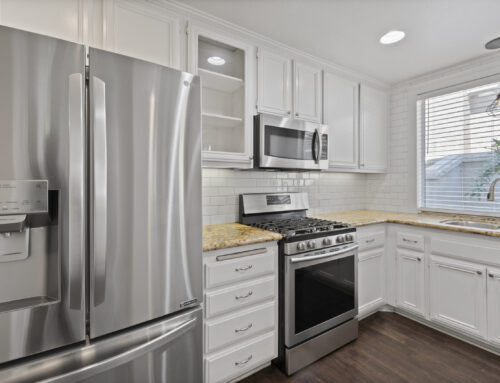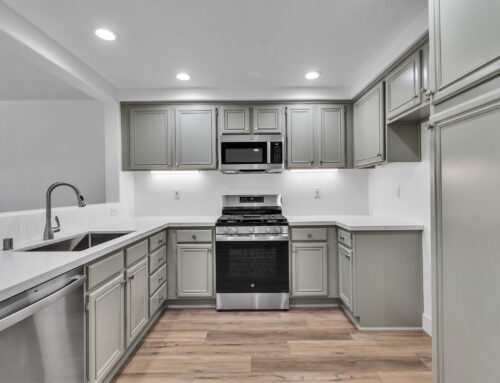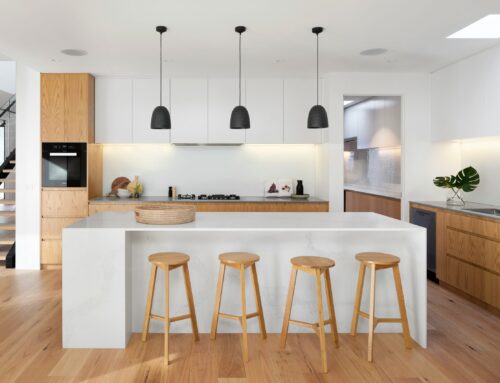Has your mortgage left you so short on cash, you plan to eat Kraft mac ‘n’ cheese every night for the next 30 years? We feel your pain. That’s why most lenders scrutinize your financials and will only loan you as much as you can afford. But here’s the problem: Circumstances change. Layoffs happen, roofs need repairs, cars get into accidents, people get sick, and an endless number of other unforeseen setbacks can take a bite out of your budget. So if you’re scraping by every month, you may want to consider these totally legit tactics to score a lower mortgage payment so you don’t have to suffer.
Refinance
This one’s a no-brainer. Haven’t you heard? Interest rates are at an all-time low, and lower interest means lower monthly mortgage payments! Let’s say you took out a 30-year fixed-rate mortgage for $250,000 in January 2014 at 4.43% (the going rate at the time, according to Freddie Mac).
If you refinanced today at 3.5%, you would save approximately $48,141 over the term of the loan (assuming closing costs of approximately $3,000). Or, to really make you run out and refinance, let’s call it about $125 extra in your pocket per month right this minute. It’s like getting a raise without even having to work harder.
If you switch to a 20-year mortgage, on the other hand, your monthly payment would more or less stay the same, but you’d be paying for 10 fewer years, saving you almost $120,000 in interest over the life of the loan. That’s a nice chunk of change!
Ditch your mortgage insurance
If your down payment totaled less than 20% of your home’s value, most lenders will require that you pay mortgage insurance. That will cost you around $225 a month on a $250,000 house if you only put down 5%. To eliminate this extra burden, you can always try scrounging together enough money to reach that 20% threshold, but there’s another (far easier) way as well: If your property has appreciated 20% and it’s been two or more years since you bought it, you can have the mortgage insurance removed without having to refinance. “In our current economy, it’s probable that within two years, you should be in position to have 20% equity,” says Frank Fuentes, vice president of multicultural lending for New American Funding.
Combine the two above for max savings
The recent home value increases, combined with today’s lower interest rates, can give borrowers a double whammy in terms of savings, says Joe Tishkoff of Skyline Home Loans.
For example, if a home was purchased for $350,000 with 5% down, the borrower would have gotten a mortgage for $332,500.
A year and a half ago, interest rates were approximately 1% higher than they are now… plus, let’s say the home has appreciated in value and is now worth $385,000. A borrower would save approximately $350 to $375 a month by refinancing at today’s rates and by reducing or eliminating mortgage insurance commensurate with the home’s higher value. “That amounts to an 18% payment reduction, which buyers haven’t seen in the last decade,” Tishkoff points out.
Look for an interest-only loan
With this type of loan, the borrower has the flexibility to only pay interest for the first 10 years of the 30-year loan, which makes the monthly payment substantially lower than if you were paying principal andinterest. These loans are ideal for borrowers whose income may be sporadic, since they can make lower payments each month, yet make additional payments in months when they have better cash flow, says Daniel Vaturi, a mortgage loan originator with FM Home Loans.
For example, with a 3.5% rate on a $250,000 loan, a standard 30-year fixed rate loan with principal and interest would come to $1,122.61 per month But with an interest-only loan, the mandatory payment would fall to $729.17 monthly for the first 10 years. Of course, after that period, you will have to make higher payments—how much is something you will negotiate—but if you anticipate that your job situation will stabilize and/or you will be making a better income by then, this tradeoff could very well be worth it.
Get an ARM vs fixed rate mortgage
While the vast majority of people select a 30-year fixed rate loan, in reality, few people hold a mortgage that long, says Bruce Ailion, Realtor and attorney for RE/Max Town and Country in Atlanta. A short-term adjustable rate mortgage (ARM), which is fixed for 3, 5, 7 or 10 years and then adjusts, will have a lower starting rate, so you will save money in the early years. “If you are planning to stay less than 10 years, there’s no reason to pay a premium to have a rate locked in for the time you will not have the loan,” Ailion points out. However, he cautions that choosing an ARM requires some projected clarity of your future plans, and a willingness to accept the consequences if you guessed wrong. “Most people opt for certainty; they sleep better at night knowing their payment does not change,” says Ailion. “Still, they could likely save serious money with an ARM.”
Original article published on Realtor.com written by






